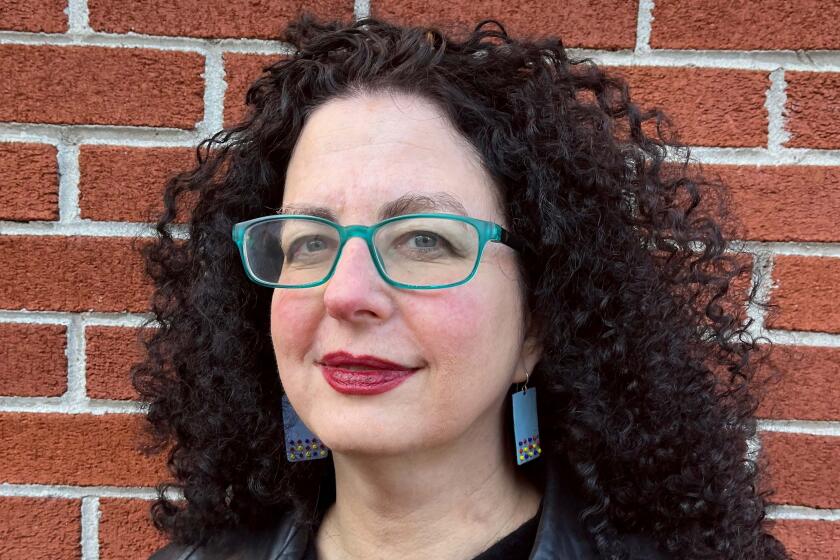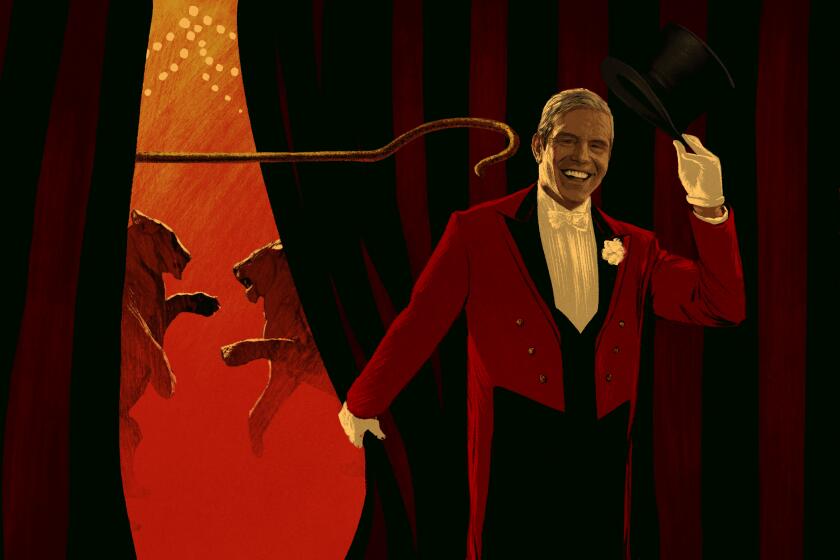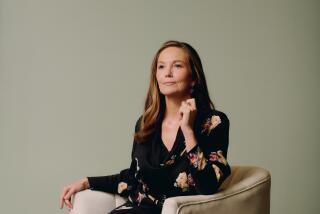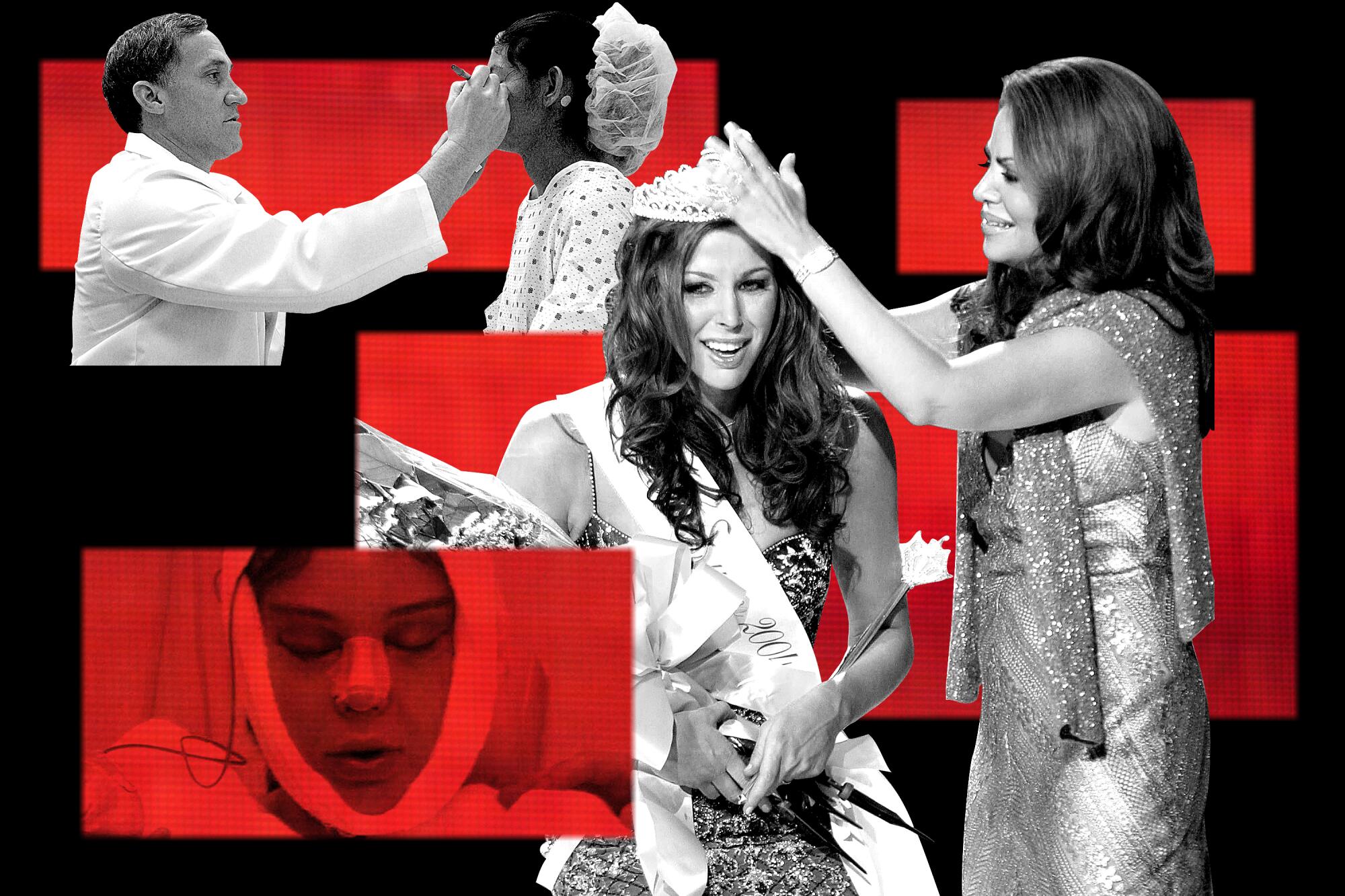
- Share via
Twenty years ago, Rachel Love took part in a bizarre televised experiment that transformed her — inside and out. It all began one morning as she drove to work in downtown Seattle. An ad came on the radio announcing a casting call for a new reality TV show about women who wanted to change their lives through plastic surgery and therapy.
“I was at a really low point in my life,” Love told The Times in a recent phone call from her home in Las Vegas. About a month before she heard the ad, Love’s sister-in-law, Jill, had died by suicide, leaving behind an infant son. Love had been close to Jill, who was married to her brother, and was devastated. She was also newly married but already questioning the long-term viability of the relationship.
“Something made me think, maybe I want to do that,” Love said.
Little did she know she was about to become a key figure in one of the most notorious reality shows from an era of anything-goes unscripted TV. After a lengthy screening process, Love was cast in the inaugural season of “The Swan,” which premiered April 7, 2004 — and immediately sparked controversy.

Subscribers get exclusive access to this story
We’re offering L.A. Times subscribers special access to our best journalism. Thank you for your support.
Explore more Subscriber Exclusive content.
Created by former Telemundo executive Nely Galán, “The Swan” premiered during a period of rampant experimentation in reality TV. This trend was especially pronounced at Fox, which had a reputation for manipulative, headline-grabbing shows like “Joe Millionaire,” where a construction worker dated a group of women who believed he was a wealthy bachelor. Makeover shows that tapped into the American zeal for self-improvement and consumption were also all the rage at the time, from “What Not to Wear” to “Extreme Makeover.”
“The Swan” took this to another level.
Billed as “the most unique competition ever devised,” the Fox series followed 16 women labeled as “ugly ducklings” as they underwent complete makeovers over the course of three months — including extensive plastic surgery, therapy and weight loss. The contestants were sequestered and prohibited from looking in the mirror until their reveal. They were also unknowingly competing for slots in a beauty pageant where the ultimate “Swan” would be crowned. That title went to Love, whose transformation from an insecure 27-year-old with a crooked smile into an auburn-haired glamour queen was deemed the most dramatic.
With an average of about 9 million viewers across its first season, “The Swan” wasn’t the highest-rated new reality show of 2004 — that honor went to “The Apprentice.” But the backlash it provoked was extensive and furious. Critics called it “hurtful and repellent” and “one of the most sadistic TV shows of the decade.” The show was parodied on “Saturday Night Live,” and People magazine ran Love’s face on the cover, under the hand-wringing headline, “Has TV plastic surgery gone too far?”

“The Swan” lasted only two seasons at Fox. But two decades after its broadcast, it still appears on lists of the worst reality shows of all time and is viewed as a cultural relic from a mean-spirited, misogynistic decade when even rich, famous women endured withering scrutiny of their appearance. The show is not currently available to stream, but on YouTube and TikTok, it’s easy to find clips — often annotated with horrified reactions from contemporary viewers.
Yet as shocking as “The Swan” seems today, it also feels oddly prescient. The use of Ozempic, Botox and Facetune has been normalized, and radically altering one’s appearance is easier and more accepted than ever. The makeovers depicted in “The Swan,” which once seemed shocking, are no more dramatic than the transformations of celebrities like the Jenner-Kardashian family and countless “Real Housewives.”
For many former participants, the experience of “The Swan” was more profound than the crass reality-TV depiction. These women, most of whom were in their 20s and 30s at the time, saw “The Swan” as more than just an opportunity to address nagging physical insecurities with free plastic surgery. It was also a chance to access therapy for the first time, or get dental work that was otherwise prohibitively expensive. The Times reached out to several participants, and those who agreed to speak expressed a range of emotions about their time on “The Swan.” While many objected to the show’s sensationalism, they also say it had a lasting and largely positive influence on their lives. Nearly all said they would do it again.
“It was the first time in my life that I was actually doing something for just myself,” said Love, who received several cosmetic procedures, including a nose job, a chin implant, a breast lift, liposuction and dental veneers. She also threw herself into intense sessions with the show’s therapist, Lynn Ianni. Even when her father was diagnosed with esophageal cancer in the middle of production, she didn’t waver in her commitment to change.
Using more than 300 interviews with the people who invented the genre, Emily Nussbaum crafts the story of the origins of reality TV from 1947 to 2009.
Love was disappointed to see how the final edit of her episode played up the tension in her marriage — which ended in divorce many years after her “Swan” stardom — while omitting any mention of Jill’s suicide, the event that had motivated her to apply in the first place.
“We were definitely taken advantage of,” Love said. “But that doesn’t negate all the good things that came out of it. I’m 100% happy with who I am as an individual now. Part of that is due to my experience with ‘The Swan.’ ”
‘Swan’ is hatched
The idea for “The Swan” came to Galán when she was staying at Canyon Ranch, the luxurious spa in Tucson, during a difficult time as a newly single mother. A friend sent her a copy of the complete works of Hans Christian Andersen, and as she read the tale of the ugly duckling who transformed into a beautiful swan, she thought, “That’s a TV show.”
Galán, who was developing programming for Spanish-language television, envisioned a contemporary update on “Queen for a Day,” the game show from the ‘50s and ‘60s in which downtrodden women competed for prizes by sharing their tales of woe. “The Swan” would be an earnest program featuring Latinas who “didn’t have the money to worry about themselves” and came from a culture where plastic surgery and pageants were more accepted, she said.
It would chronicle dramatic physical makeovers, but it would also go deeper, with therapy and life-coaching — “all the things that I did for myself,” said Galán, speaking over a Zoom call.

She turned to Mike Darnell, a former colleague, for help with the budget. Darnell, then in charge of alternative programming at Fox, was the provocateur behind such controversial shows as “Who Wants to Marry a Multimillionaire?” He told her he wanted the show for Fox and made significant changes to the version of “The Swan” she had envisioned. This was the heyday of “American Idol” and other competition shows that ended with dramatic eliminations each week. It was his idea that the women would compete for slots in the pageant. (Darnell declined to speak for this article.)
When she saw the first promo for the show, “I started crying,” said Galán. “Mike Darnell said to me, ‘If you really want to be a great producer, you can’t worry about being so liked. Reality TV has to be loud.’”
“The Swan” was nothing if not loud.
At the top of each episode, host Amanda Byram, a willowy Irish model, assembled a team of experts: plastic surgeons Terry Dubrow and Randal Haworth, fitness trainer Greg Comeaux, aforementioned therapist Ianni, cosmetic dentist Sherri Worth (who surrendered her license in 2017). Galán, who was initially not supposed to be on camera, played the role of life coach. (Comeaux was replaced by Debbie Siebers in Season 2.)
As scrutiny mounts on reality TV, stars from Bravo’s ‘Real Housewives’ franchises, ‘Love Is Blind’ and ‘The Challenge’ say the industry needs to change.
As the team sat around a large conference table, Byram introduced the two women who would become the swans of the week in tearful biographical segments. Viewers got a glimpse of the contestants’ lives and learned about the physical and emotional vulnerabilities that were holding them back. A full-body graphic of the contestants dressed in saggy gray underwear and a flimsy bralette appeared onscreen as the experts weighed in with their assessments.
A typical exchange went like this:
Haworth: “The biggest problem with her is that she’s got such long nostrils. I have to correct that. I have to lift up the corners of her eyes — she’s got a sad look — liposuction her chin, do a breast lift and total body liposuction.”
Byram: “Are you leaving any time for Greg to work on her?”
A set of crosshairs moved up and down their bodies, targeting each perceived flaw — whether their cankles, flabby bellies or “masculine teeth.” The sequence called to mind the opening credits of “The Six Million Dollar Man,” as if the women participating in the show were science experiments, an impression that was enhanced by the fact that the contestants were swollen and wrapped in bandages for much of their time onscreen.
The episodes followed both participants through surgery, recovery, grueling workouts, intense therapy sessions and anguished phone calls home, condensing their months-long journeys into a dizzying 44 minutes of television.
In perhaps the show’s most outlandish twist — inspired by Galán’s trip to a silent retreat — the contestants were forbidden from looking in the mirror throughout their three-month transformation, until a dramatic on-camera reveal where the sweats and bandages were replaced with evening gowns and hair extensions. As a set of curtains parted, they saw their new selves in a mirror, radically altered, for the first time. Many erupted in tears of joy. After the reveals, the woman who had done the most work to improve herself, according to the experts, was chosen to advance to the season finale pageant. The other went home to enjoy her new life as a swan — and perhaps wonder how she had fallen short.
Selecting the swans
“The Swan” claimed to have attracted 200,000 hopefuls to its casting calls — but ultimately just 16 women were featured in each season.
“We were looking for great stories,” said Galán, who was also an executive producer, about casting the show. “We wanted to make sure that if people were getting $200,000 of [treatments], that people would feel like that person really deserved it.”
Cindy Ingle was a 32-year-old Navy wife and mother of two young boys who hoped that a nose job and a tummy tuck would improve her wounded self-esteem. “But as a young military family, there’s no way in Hades we ever could afford [plastic surgery],” she said via Zoom from her home in California. Ingle hadn’t really considered therapy because “I’m Mexican, and culturally we do not talk to anybody about our problems,” she said.
Ingle attended a “Swan” casting call in San Diego, wearing a baggy yellow turtleneck and no makeup, figuring the worse she looked, the better. “The casting director asked us to introduce ourselves, and say what we wanted to change,” she recalled. “I said, ‘It will be faster if I tell you what I wouldn’t change — from my knees down.’ And that got a laugh.”
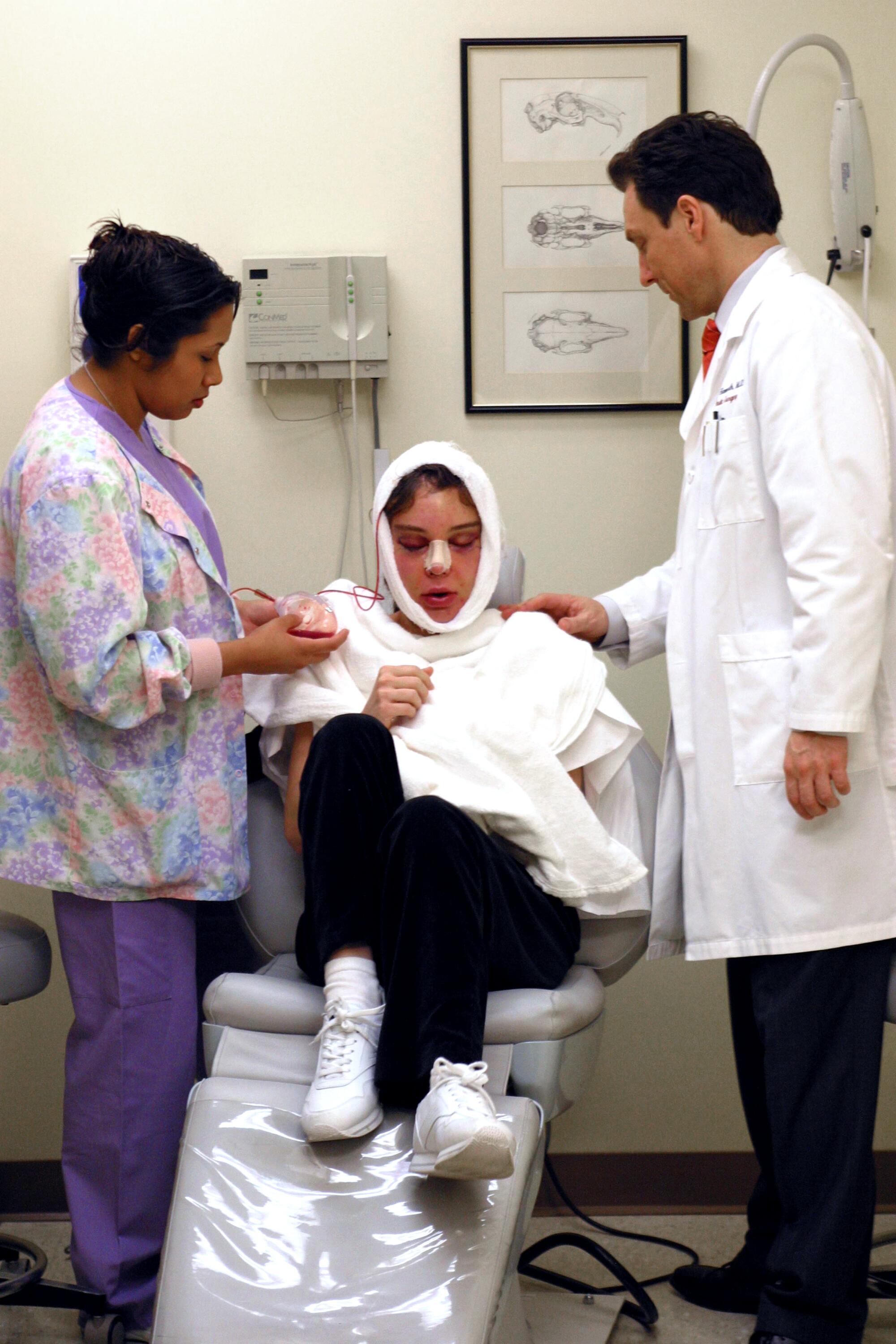
The lengthy casting process included a background check, medical assessments and a psychological evaluation. Contestants who made the final cut were given a modest per diem and lived in a two-bedroom apartment with a fellow swan. Mirrors and other reflective surfaces — even TV screens — were covered so the women couldn’t see themselves. They were allowed a single brief phone call a week, which was recorded for possible use in the show. All mail — incoming and outgoing — was screened by producers. About half the contestants were mothers, who had to make arrangements for childcare during the months they were away.
Among the first things the women had to do upon arrival in L.A. was change into the dreaded gray underwear, then stand on a rotating pedestal as cameras captured a 360-degree “before” shot of their bodies that would be used repeatedly in the show.
Kelly Alemi was a 28-year-old flight attendant living in Maryland when she applied to “The Swan.” Standing in front of a green screen in next to nothing, as a mostly male crew filmed her from every angle, “was the only time I actually felt sick,” she said. Alemi was so determined to get surgery to even out her asymmetrical breasts that she drove to a casting call in Philadelphia against her mom’s advice: “She’s like, ‘I’m not trying to be mean, but you’re not ugly enough for them to take you.’ ”
Bravo and the producers of shows such as “Real Housewives” face a slew of allegations and lawsuits claiming bullying, harassment and unfair labor practices.
‘They have big plans for you’
Many of the women had applied to the show in hopes of addressing one or two features that made them feel insecure — often their noses, teeth or breasts. So it was daunting when the surgeons recommended a slew of other procedures they’d never considered. Kelly Becker-Berdyck, then 25 and from Wisconsin, wanted rhinoplasty; as a child, she’d been taunted and called a “witch.” Then Haworth suggested she get cheek implants and an ear lobe reduction, among other modifications. “It made me look at myself differently,” she recalled. “Why does he want to change those things?”
“The producers wanted as much of a transformation as possible,” said Dubrow, who already had a successful practice in Orange County when he was cast in the show. He saw the potential in bringing his skills to a national audience, but also believed in taking a more cautious approach. “If a patient showed one iota of hesitation about a procedure, that was it. I would take them aside and go, ‘Don’t do anything you don’t want to do.’”
Tawnya Perrotta was one of those wary patients. She had applied to “The Swan” after a devastating year in which her younger brother died in a tractor accident, she was laid off from her job, and she divorced her philandering husband.
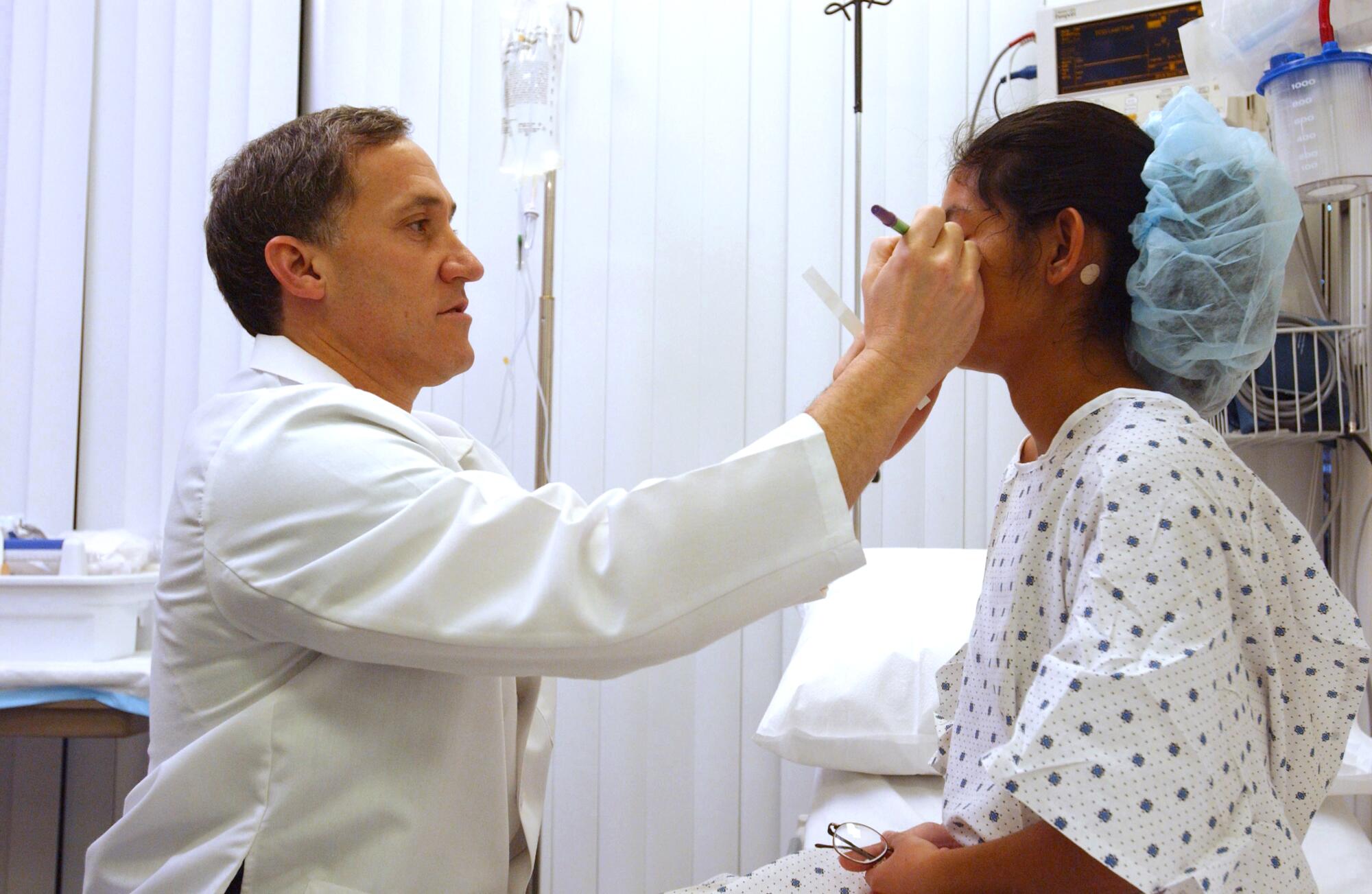
To Perrotta, then a 40-year-old mother of two teenage girls, “The Swan” seemed like a great opportunity to boost her confidence with therapy, a shiny set of veneers and some liposuction. But once Perrotta landed in L.A., she said she faced pressure to do a slew of procedures she didn’t want. She was the oldest contestant in Season 1, and she remembered a production assistant telling her, “They have big plans for you.”
Perrotta ended up turning down a number of procedures, including a facelift and an extensive nose job that would have removed the distinctive bump she passed on to her daughters, opting for a targeted tip refinement instead. She worried that producers would send her home for refusing to comply, but then one of her daughters was in a car accident, which “made for good TV,” Perrotta said. She was not kicked off the show but did not advance to the pageant. Her episode emphasized her supposed premature aging — a subjective assessment by the experts . She later self-published a book, “The Swan Diaries,” about her time on the show. Nonetheless, Perrotta found the experience worthwhile because she was able to focus on herself at a moment when she desperately needed to do so. “It’s three months where the only person you had to put to bed was yourself,” she said.
Recovery could be difficult, with excruciating side effects that made it hard to walk, much less work out — but the show was not always sympathetic to the women’s discomfort. Kathy Weber, a military veteran who signed up for”The Swan” after a divorce in her early 20s, experienced terrible pain and swelling from liposuction. Producers used a context-free clip of her declaring that she was “praying for death” to portray her as a whiner.
Dubrow, who now appears in the E! reality show “Botched,” said he grew disillusioned with his profession for years after “The Swan.” The biggest problem was the show’s implicit message that “you’re not good enough the way you are,” he said. “I certainly wouldn’t do it today.”
Self-esteem breakthroughs
Ianni was an integral part of women’s lives during taping. A psychotherapist who specialized in treating survivors of sexual abuse and other types of trauma, she believed in the power of talking about mental health on television, where she could potentially reach millions of people — far beyond what was capable in a lifetime of practice.
At the time, “People didn’t have a lot of access to therapy unless they were in a big city and had good insurance,” she said.
She held regular sessions with the women, which were filmed and cut down into a minute or two of footage in each episode. She found that many of the contestants had poor self-esteem that had been exacerbated by bullying. In at least one session, she heard a cameraman sniffling.
Becker-Berdyck applied to “The Swan” in an attempt to heal from the bullying she endured in middle school — memories of which made her tear up during a Zoom conversation. “Those three months of therapy really helped me to understand that words can be hurtful, but I’m not going to let them break me anymore.”
Ianni felt that by the end of their time on “The Swan,” the women “were at a point where they could go forth and prosper,” even if this growth was not reflected in the final edit of the series, which focused on their physical changes. “I wish they would have shown those breakthroughs,” she said.

Love, who called Ianni “the one person on that show who had everyone’s best interest in mind,” expressed similar frustrations. “A lot of things that I said in therapy were cut to meet the needs of the production,” she said. Hardest of all was Jill’s omission from the narrative. “Suicide is uncomfortable. And they didn’t want to talk about it.”
Outside of therapy and medical appointments, the contestants spent much of their time working out.
“We would go to the gym and that was our job,” said Alemi, who ran seven miles and did hundreds of sit-ups a day but was still told she wasn’t losing enough weight. At one point, she demanded a scale so she could weigh her newly enhanced breasts, which she suspected were adding several pounds to her frame.
The women subsisted on a strict diet of food from Jenny Craig, though some occasionally indulged in contraband brownies from Starbucks. Their behavior was closely monitored, and the threat of being sent home for even a minor infraction loomed large. (One contestant left early after she was caught with a mirror.) Love recalls a production assistant they nicknamed “The Peanut Butter Nazi” because he was responsible for doling out their meager ration of the calorie-dense substance.
“The Swan” almost never showed the contestants interacting during their downtime. But many of the women bonded during this surreal, isolated period, helping one another while recuperating from surgery and acting as each other’s human mirrors. “We’d be like, ‘How does my nose look?’ ” said Becker-Berdyck.
“We couldn’t really watch TV, read magazines or read newspapers. We didn’t know what was going on except for in our little world. So we just talked to each other,” Ingle said.
‘You’re this completely different person’
Few of the women realized they were competing with each other for slots in the pageant until well into production, and some thought it undermined the process. “You bring us on this show because you want to give us self-esteem, but then you pair us up against each other?” Alemi recalled thinking. “That is the dumbest concept I have ever heard.”
Filmed at an opulent residence near the Playboy Mansion, the reveals were jarring enough without the added element of competition. “You hadn’t seen yourself, literally, since they put you on that platform in that stupid bra and underwear and pranced you around,” Love said. “And then all of a sudden, you’re this completely different person.”
Alemi reacted with dismay when the curtains parted and she saw a pale woman with blond ringlets and garish red lipstick gazing back at her — a look that reminded her of Miss Piggy. “‘This is ridiculous,’” she recalled saying. “’What the hell have you all done with me?’”
Before Love’s reveal, a producer quietly pulled her aside and told her the other contestants weren’t giving them the big, ecstatic reactions they had been hoping for.
“I was always somebody who wanted to make people happy, and put myself second. That’s one of the things I promised I wasn’t going to do on ‘The Swan,’” said Love. But that’s what happened. When the curtains parted, she giddily squealed, “I don’t look anything like that girl,” and began to weep — delivering a perfectly melodramatic reaction shot that would be played over and over again in promos for the show.
In reality, Love was confused by what she saw in the mirror: a woman with gleaming white teeth, cascading red hair reminiscent of Ariel the mermaid, a pert nose and the long, lithe physique of a model. “It was an absolute mindf—. I was horrified, but I said the things that I thought that they wanted me to say.” She worried she looked like Joceyln Wildenstein, the socialite known for her cat-like appearance. Later that night, she returned to her hotel room and examined her reflection at length. “I was like, ‘This is you now. It’s OK.’”
Love and eight other women —including Ingle and Alemi — stayed in L.A. for two more months to prepare for the pageant, which included swimwear, evening gown and interview segments, along with a lingerie competition in which they strutted down the runway wearing silky bustiers and heels. Until the end, Love was certain that her former roommate, Beth Lay, a young mom in her early 20s, was going to win. Instead, Byram called Love’s name (Lay was first runner-up). Mostly, what she can remember is trying to keep the crown from falling off her head.

Love won a bevy of prizes, including $50,000 in cash, a fur coat (which she declined) and a $10,000 scholarship to Tony Robbins Mastery University (which she didn’t use). She appeared on talk shows and met celebrities. After so many years as a wallflower, it was intoxicating to receive so much attention. “I was having the time of my life,” she said.
Life after ‘The Swan’
A second season of “The Swan” aired in late 2004, but the show was canceled when a new entertainment president took over Fox. By then, viewers with a taste for problematic makeover shows had numerous other options, like “The Biggest Loser” or “I Want a Famous Face.” Galán and Darnell later developed a celebrity version of “The Swan,” but it was shelved when he left Fox. Inspired by her work on the show, Galán pursued a doctorate in psychology. She hopes to reboot the show someday.
For contestants, life after “The Swan” was not without complications. “People react to you differently when you’re prettier,” Love said.
Even though social media was still in its infancy, it was difficult to avoid the controversy the show incited. Weber, who was not selected for the pageant, recalls reading some harsh comments in online forums — people who said the women had “mutilated” themselves. She saw the show in a different light, as providing “a little boost of confidence for us to be able to move forward.”
Before “The Swan,” Weber, who is now a nurse in Illinois, said she was very reserved. “I wanted to be the person that would get up and sing karaoke or get up and give a speech and feel comfortable having eyes on me,” she said. “After the surgery, I felt like I could receive that and not feel like I needed to hide or make myself smaller.”
Other swans echo this sentiment.
“The confidence that I gained from the experience has stayed with me,” said Ingle (who has other lingering effects, like eyelashes that grow inward). “The biggest thing that I walked away with was knowing that it’s OK to take care of myself and not feel guilty about it.”
Weber started a private Facebook group, where many of the swans post updates about their jobs and kids — but also compare notes on replacing their breast implants and veneers, expensive maintenance they’ve been responsible for since leaving the show. They’re grateful to share a space with people who understand their post-”Swan”journeys, which for some have included divorce and cycles of weight gain and loss.
“It’s nice to have that sisterhood, without the judgment of ‘Why would you do that to yourself?’ ” said Weber, who remains protective of her co-stars. “I don’t want this experience taken out of context for any of us.”
Times librarian Scott Wilson contributed research to this article.
Sign up for This Evening's Big Stories
Catch up on the day with the 7 biggest L.A. Times stories in your inbox every weekday evening.
You may occasionally receive promotional content from the Los Angeles Times.
More to Read
Sign up for This Evening's Big Stories
Catch up on the day with the 7 biggest L.A. Times stories in your inbox every weekday evening.
You may occasionally receive promotional content from the Los Angeles Times.
